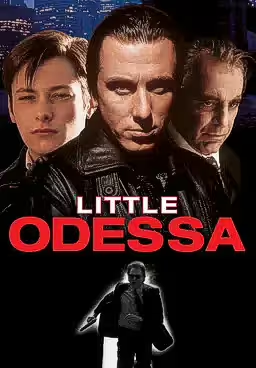Little Odessa
 Little Odessa by James Gray (1994)
Little Odessa by James Gray (1994)
A Russian-Jewish hitman returns to his native neighborhood of Brighton Beach, known as “Little Odessa,” in Brooklyn.
Quote.
“Did you come here to kill someone?”
 Family Dynamics.
Family Dynamics.
The return home coincides with a mission to be completed. One of those easy jobs that Joshua could do with his eyes closed: eliminating an Iranian jeweler. And then the plan would be to disappear, once again, as quickly as possible. But what happens when family gets in the way? There’s a younger brother (Reuben) who strongly wants to see you and has always considered you a symbol of great strength. And then there’s a father who has disowned you because of your criminal past. A father (Arkady) who sees you only as a great disappointment, one who lives far from the respect for traditions that have been taught to him. Conflicts and misunderstandings increase, and the time available to act is running out…
 Considerations.
Considerations.
“Little Odessa” marks the directorial debut of James Gray. It is a film known for its dark atmosphere and depiction of criminal life. The plot follows the return home of Joshua Shapira (played by Tim Roth), a Russian-Jewish hitman who had been estranged from his family due to his criminal activities. The name of his neighborhood highlights the large presence of Russian immigrants. In his new assignment, he will be forced to confront his past and the members of his family. We are introduced to his authoritarian father Arkady (Maximilian Schell), his sick mother Irina (Vanessa Redgrave), and his younger brother Reuben (Edward Furlong).
The film explores themes such as guilt, redemption, and family bonds. The tension grows as Joshua realizes how his choices have negatively impacted his family, leading to conflicts and personal dramas.
 “Little Odessa” has been acclaimed for its intense performances, particularly that of Tim Roth, and for its evocative direction that captures the desolation and brutality of criminal life. The film received the Silver Lion at the Venice Film Festival in 1994, cementing James Gray’s reputation as one of the emerging talents in American independent cinema.
“Little Odessa” has been acclaimed for its intense performances, particularly that of Tim Roth, and for its evocative direction that captures the desolation and brutality of criminal life. The film received the Silver Lion at the Venice Film Festival in 1994, cementing James Gray’s reputation as one of the emerging talents in American independent cinema.
The film is appreciated for its realism and for its ability to tell a personal and dramatic story within the context of organized crime, making it a significant work in the crime drama genre.


 Family Dynamics.
Family Dynamics. Considerations.
Considerations.




